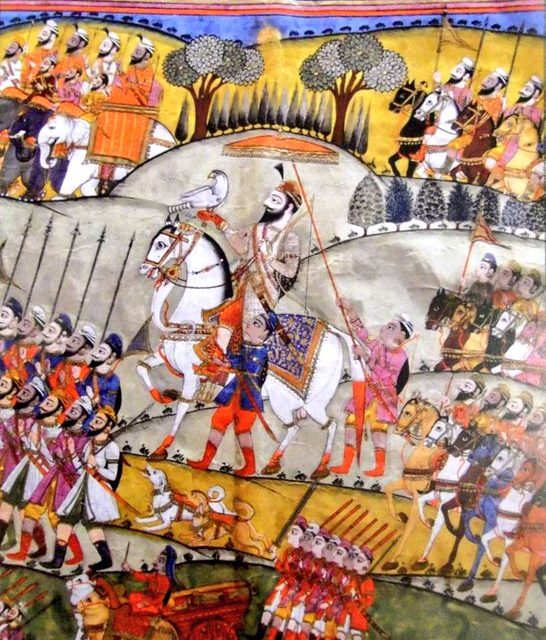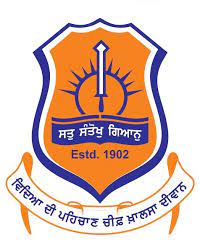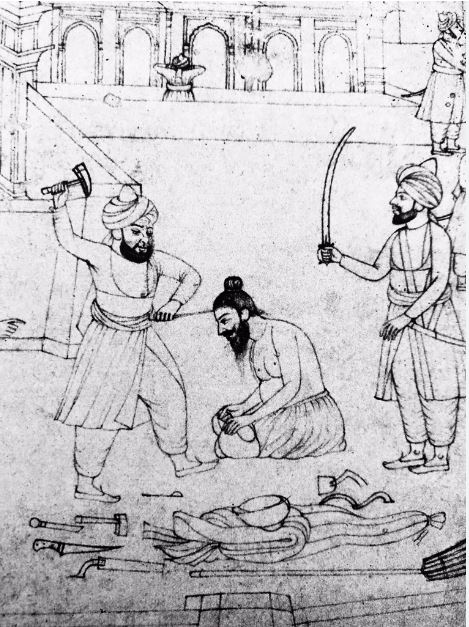
DAL KHALSA is the term used to describe the militia which came into being during the turbulent period of the second half of the eighteenth century and which became a formidable fighting force of the Sikhs in the northwestern part of India. The first Khalsa army formed and led by the creator of the Khalsa, Guru Gobind Singh (1666-1708), had broken up at the time of the evacuation of Anandpur in December 1705. Another force, at one time 40,000 strong, raised by Banda Singh Bahadur (1670-1716) was scattered after the caputre and execution of its leader.
NIHANGS or Nihang Singhs, originally known as Akalis or Akah Niharigs, are endearingly designated the Guru`s Knights or the Guru`s beloved, for the military ambience they still carry about them and the heroic style they continue to cultivate. They constitute a distinctive order among the Sikhs and are readily recognized by their dark blue loose apparel and their ample, peaked turbans festooned with quoits, insignia of the Khalsa and rosaries, all made of steel. They are always armed, and are usually seen mounted heavily laden with weapons such as swords, daggers, spears, rifles, shotguns and pistols.







